Ever dreamed of lying on the beach while earning tons of passive income?
I did.
I wanted to build my own business that generated thousands of dollars while I slept, partied, and traveled around the world.
So, in 2015, my friends and I created a niche website to teach beginners how to breakdance.
Sadly, we never made enough money to quit our jobs and move to paradise.
But here’s the thing…
Though we weren’t successful, the experience taught me a lot about how to build a niche website, market it, and monetize it. And combined with the knowledge I’ve gained working at Ahrefs, I now know the keys to success.
In this post, I’m going to show you what I’ve learned:
What I did right, what I did wrong, and what I would do differently if I created a new niche site today.
We’ll start with a quick definition, followed by a few examples…
What is a Niche Website?
Niche websites are sites that cater to a small segment of a large market by focusing on a common, specific interest.
My website, BreakDance Decoded, was a niche website. It specifically targeted breakdancers, which is a small part of the much larger “dance” market.
Other examples of niche websites are Mr. Money Mustache (focusing on saving and budgeting in the personal finance market), Copywriting Course (focusing on copywriting in the marketing/online business market), and Tone Island (focusing on guitars and related gear such as distortion pedals and amps).
There’s a common misconception that a niche website is a small site. This isn’t true.
“Niche” refers to the segment of the market, not the size of the website.
A site can be niche and still have thousands of pages covering a variety of topics related to the niche.
Nerd Fitness is a niche website that writes about fitness for nerds. Even though it’s only targeting a specific type of persona, the site has hundreds of blog posts ranking for important keywords in Google.
In general, a niche website is an information website. It either produces or sells information that solves problems (e.g. courses, ebooks, etc.).
It may eventually pivot to other monetization models like e-commerce, but the core engine behind the site is information.
Now that you know what a niche site is, let’s take a look at how you create one:
How to Create a Niche Website in 2024 (Step-By-Step)
1. Choose Your Niche
For many aspiring bloggers, niche selection is one of the most challenging dilemmas they face when starting a blog.
They either have too many ideas, or — worse — they have no idea what kind of site they should build.
It doesn’t help that there’s lots of contradictory advice out there: some people suggest you start with your passion, while others say you should choose a niche that’s profitable.
How I Chose My Niche
Personally, I started with my passion.

Not counting my job, breakdancing was the activity I spent the most time doing. So, setting up a niche site that would educate people about breakdancing was a no-brainer for me.
If you’re completely new to building a site and you just want to learn how things work, I would recommend you start with your passion.
Why?
Because growing a website is hard work. Even if you’re creating one of those itty bitty micro niche sites, it still takes time and will power
But if you’re creating content on a topic you’re passionate about, you’ll be able to find the motivation to persist on those days you feel like quitting.
(And trust me, those days will be frequent.)
How I Would Choose My Niche Today
Today, I would choose a profitable niche.
What’s that?
It’s a niche with a large audience that buys things.
And that’s what you want:
A market where people are buying, buying, and buying.
While it was fun to write about breakdancing, it was a tough market to crack. When we started, there weren’t any other niche sites about breakdancing. Our competing sites were mostly e-commerce stores selling apparel for breakdancers.
In hindsight, that should have been a warning sign.
If there are no competitors in the SERPs (Search Engine Results Pages), you should be concerned.
Competitors = Viable Market
Competition is healthy. It’s a sign the market is worth entering. It’s a sign there’s money to be made.
We should have listened.
To help you avoid the mistake we made, here are a couple tips to help you find profitable niches:
Tip #1: Brainstorm + Snooping Around
Sit down and brainstorm some niches you’re interested in pursuing. Then, do a quick Google search to see if there are any sites dedicated to them.
You can search for “best [niche] blogs” to get started (e.g. “best breakdancing blogs”).
And once you’ve found a few potential competitors in your niche, “snoop” around their site and see how they’re monetizing.
If they have a variety of products, it could be a good niche.
For example, let’s say I am interested in the paleo niche. A quick Google search for the “best paleo blogs” brings me to this site:
Looking around, I can see Diane monetizes her site in a variety of ways:
- Books
- Programs/Courses
- Amazon Affiliates
- Certifying other health coaches
- Etc.
Seems like a good niche!
Tip #2: Browse Affiliate Marketplaces
Alternatively, you can also look into affiliate networks like ClickBank and Amazon Associates. These are middlemen networks that connect bloggers and niche website owners with companies offering affiliate marketing opportunities.
You have an audience, they have a product. Perfect match!
Affiliate networks are ideal because:
- These products are being bought by people interested in different niches;
- They have a variety of categories you can browse.
Just go through them until you find products you’re interested in.
Here’s an example:
Right now, I’m learning Russian. So, I might be interested in starting a niche site about the Russian language.
And lo and behold, ClickBank has a category for the Russian language. Cool!
Unfortunately, there is only one product for sale in this category.
That isn’t promising. If it was a profitable niche, there would probably be more options.
However, when I click on “Languages”, I see lots of courses. And if I follow tip #1, searching for “best language hacking blogs” brings back a strong list of competitors, such as Fluent in 3 Months.
So, “Russian” might be too niche.
But “language” learning could be a niche worth pursuing.
Key Takeaways
- If you’re completely new, start a niche website for one of your hobbies or passions.
- If you know what you’re doing, choose a profitable niche.
- To find profitable niches, do a Google search to see if there are any sites ranking in the SERPs for your target topic. If there are, snoop around to see if they’re monetizing.
- You can also use affiliate networks like ClickBank to find interesting niche ideas.
Further Reading
- How To Find A Niche That Is Guaranteed To Be Profitable by Authority Hacker
- Find Your Niche With My Secret To Finding Profitable Niche by Matthew Woodward
- How To Find A Profitable Niche For Your Blog (7 Simple Steps) by Cloud Living
2. Setup Your Site
Done with niche selection?
Great. Now it’s time to setup your site.
There are four things you need when you first get started:
- Domain
- Hosting Provider
- Content Management System (CMS)
- Word Press Theme (Plus Some Essential Plugins)
Now, don’t worry if you’re not tech-savvy. I wasn’t great when I started too. I’ll be running through what each of them are, so you can get started fast.
How I Setup My Site (and How I Would Do it Differently Today)
See this?

This is a domain. Think of your domain as the address to your house.
A lot of beginners get stuck on this phase. They procrastinate, hoping to find a perfect domain name.
The hard truth? There’s no such thing.
For us, we wanted a domain that was memorable but self-explanatory. We wanted people to understand what the site was about immediately.
That meant we needed the word “breakdance” in our domain. After brainstorming a few ideas, and consulting the thesaurus, we settled on breakdancedecoded.com.
Don’t spend all your time deciding on the domain. Just make sure it is:
- Short and memorable;
- Easy to spell. Imagine if someone asked you for your domain in real-life. Would it be easy for someone to remember and type it in later, or would they struggle to remember?
- Includes your niche. This tells the visitor right away what your site is about.
If you’re stuck, you can use a tool like Domain Name Brain to give you some ideas:
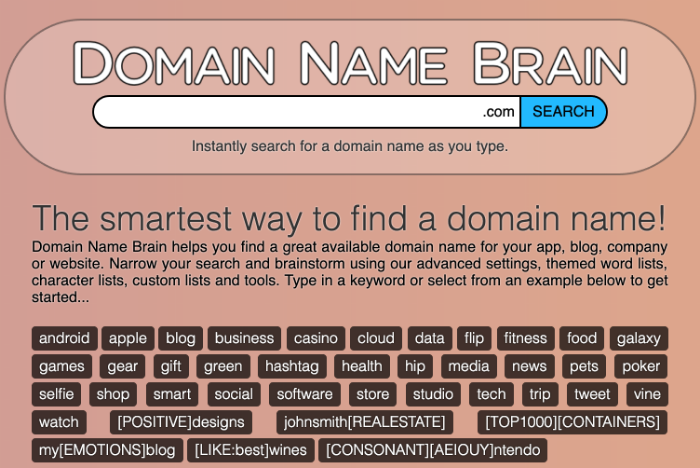
Once you’re done deciding the name, check if it is available in a domain registrar like NameCheap (affiliate link) or Hover.
Next: A Hosting Provider
To have a house, you need to have the architecture to hold it.
Your host is that architecture.
A hosting provider allows your website to be accessible on the Internet.
Since we weren’t technically-savvy, we followed a friend’s instruction and got our hosting from WPEngine.
In hindsight, that wasn’t a good decision. WPEngine is great, but it is pretty costly for a beginner site that won’t get that much traffic.
If you’re starting out, you probably won’t be getting very much traffic. So, it’s better to get a cheaper host.
There are plenty of hosting providers out there. Take a look around. Smart Blogger recommends SiteGround (affiliate link), so they’re one option to consider.
Editor’s Note:
If you’re keen on SiteGround, check out our fully-fleshed-out review and get an insider look at the service from someone who actually uses it: SiteGround Review: Still the Best (or Not-So-Good) in 2024?
Content Management System (CMS)
A content management system is an online tool that enables you to create and manage your content (e.g. blog posts). WordPress is the most popular CMS, but there are other alternatives too.
Since we were using WPEngine, we turned to WordPress as our blogging platform.
As you’ll see later on, the biggest traffic channel for a niche site will likely be Google. As such, you should choose a CMS that is SEO-friendly.
Most search engine optimization (SEO) experts recommend WordPress, and it’s the CMS I recommend too.
Editor’s Note:
The steps for installing WordPress will depend on your hosting provide and your particular situation.
But don’t worry.
Chances are excellent our massive, step-by-guide on How to Install WordPress in 5 Minutes or Less will be able to walk you through the tricky parts.
Once you’re done with the installation, you’ll need a theme.
A theme is a template that defines the appearance of your site. (Think of it like the design of your house).
For our theme, we chose Genesis.
Genesis isn’t the best-looking theme around, but at the time we were looking for efficiency and ease of use. (Plus, we weren’t that great with design.) We also figured that we could upgrade to a better theme later on, if we got more successful.
With its simplicity, Genesis was a great theme for us. If you’re more design-savvy, feel free to pick another theme.
Smart Blogger recommends Astra Pro (affiliate link), but you can also browse through the selections in ThemeForest. Astra Pro is also fully compatible with Elementor (affiliate link).
Once you’re done, install these two free plugins:
If you want more WordPress plugins to install, check out this list of time savers.
Key Takeaways
- Don’t get analysis paralysis when it comes to your domain name. Choose one that is memorable, easy to spell, and includes your niche.
- Since you won’t get very much traffic initially, start with a cheaper, flexible host, like SiteGround.
- Choose WordPress as your CMS.
Further Reading
- WordPress SEO: The Only Guide You Need by Viper Chill
- WordPress SEO: A Practical (and EASY) Guide by Ahrefs
3. Do Topic Research
Your foundation is set.
It’s time to start getting traffic to your site.
How I Did My Topic Research
Now, at this point, most bloggers make the same mistake:
They write about whatever tickles their fancy.
I know because I did the same thing.
I brainstormed topics I thought would resonate with my audience, and then I wrote about them. The only reason I got away with it was because I was a breakdancer writing to other breakdancers.
I knew the topics that would interest my audience because I was a part of that audience.
But if you’re working in a niche that is unfamiliar to you, you can’t just write about anything you want.
Those topics won’t resonate and you won’t build an audience.
Worse:
Your content won’t rank in Google, which means no traffic will come to your site.
How I Would Do My Topic Research Today
For most niche sites, the best way to get traffic is SEO.
SEO is an acquisition channel that will grow passively. As long as you are ranking well for the keywords you’re targeting, you will get passive traffic.
Compare that with other channels.
You could experiment with paid ads (for example, Facebook ads), but as soon as you stop the campaign or run out of money, your traffic dries up immediately.
The same goes for social media. You have to either build up a large audience (difficult) or bank on viral hits (also difficult). And as soon as you stop tweeting and sharing, whatever traffic you were getting will disappear.
Search engine traffic doesn’t stop. It keeps going. Even when you’re sleeping.
If you want search traffic, you need to write about topics that people are searching for. In other words:
You need to create content for topics with search traffic potential.
In SEO parlance, this is known as keyword research.
Here are a few ways you can do it:
Use a Keyword Research Tool
The easiest way to get started is to use a keyword research tool.
Enter any seed keywords related to your niche into a keyword research tool, and it will generate hundreds of different ideas you can target.
For example, here’s a free keyword tool called AnswerThePublic:
AnswerThePublic generates ideas for you based on different categories: questions, prepositions, comparisons, alphabeticals, etc.
There are plenty of other free tools out there, like:
- Google Keyword Planner
- Wordtracker Scout
- Keywords Everywhere
Take your pick.
One of the most important metrics SEOs look at when doing keyword research is search volume. Essentially, search volume is the amount of monthly searches for a keyword.
The problem with a free tool is that, while it’s free, it usually has either missing or incomplete data.
As such, you might want to consider using a professional keyword tool like Ahrefs’ Keywords Explorer (affiliate link).
You can access it using the Ahrefs’ $7 for 7-days trial.
Enter a seed keyword into Keywords Explorer, and it will generate thousands of keyword ideas, plus all sorts of relevant SEO metrics:
Here’s a quick explanation of everything you’re seeing in the above screenshot:
- Keyword Difficulty (KD). Ahrefs’ Keyword Difficulty metric gives you an estimate of how hard it would be to rank in the Top 10 search results for a given keyword.
- Search volume (volume). This shows you how many times per month, on average, people in a given country search for your target keyword.
- Clicks. This shows you the average monthly number of clicks on the search results that people make while searching for the target keyword.
- Cost-per-click (CPC). This shows you the average price that advertisers pay for a click on their ad in Google’s paid search results for a target keyword in a given country.
- Clicks-per-search (CPS). This shows you the average number of clicks people perform after searching for a given keyword.
- Return Rate (RR). This shows you how often the same person searches for a given keyword over a 30-day period.
- SERP Features (SF). This refers to how many Google’s SERP Features appear in the search results for this keyword.
- Parent Topic. This shows you a better topic you can target as opposed to the keyword you’re entered.
Lurk in Communities
The internet is jam-packed with communities for every imaginable topic out there.
Love the TV show Brooklyn Nine-Nine? There’s a subreddit for that. Enjoy discovering new products? Well, that’s how ProductHunt was formed.
Whether it’s a bunch of bloggers exploring rhetorical devices or a royal rumble of renaissance crafting pros arguing about basket weaving you name it, there’s a community for it.
People gather in these communities to ask questions, discuss trending news, get recommendations, and so on.
Translation: these communities offer a wealth of topics for your niche site.
When we started, we hung out a lot on r/bboy, a subreddit for breakdancers. This was where we got our initial list of topics:
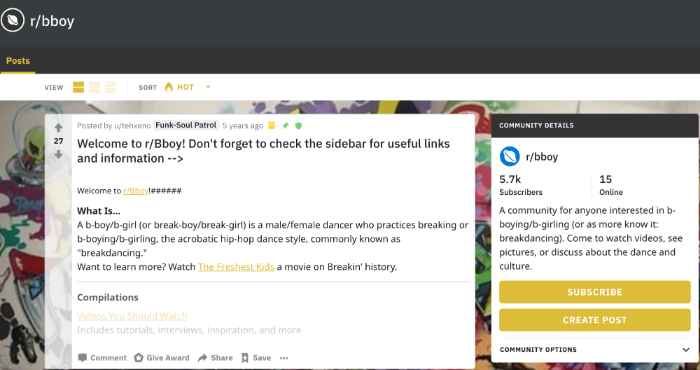
You can do the same too.
Do a search and find all the communities related to your niche. You can find them in places like:
- Reddit;
- Quora;
- Facebook;
- Slack;
- Forums (yes, they still exist);
And much more.
To find out if these topics have search traffic potential, you can install the Chrome/Firefox extension Keywords Everywhere on your browser.
You can also enter these topics into Keywords Explorer.
Ahrefs will show you all the SEO metrics, plus suggest a better topic for you to target (“Parent Topic”).
Figure Out What Your Competitors are Ranking for
Your competitors have done the hard work for you. They’ve been blogging and ranking in Google.
Your job? Borrow generously.
Find out what’s working for them, and then replicate those topic ideas.
Most sites feature their best-performing posts on their blogs, usually in a sidebar:
You can easily see which keywords they’re optimizing for.
For example, the post 595 Power Words That’ll Instantly Make You a Better Writer is obviously optimizing for the keyword “power words.”
If you’re unsure, you can click through to the post. If they’re SEO-savvy, they would have optimized their URLs for the target keyword.
Of course, the best way is to use a tool like Site Explorer.
Enter your competitor’s domain into the tool and go to the “Top Pages” report, where you’ll see all the pages sending them the most search traffic:
Key Takeaways
- To get search traffic to your niche website, you need to target topics that people are searching for. To do this, you need to do keyword research.
- You can either use a free keyword tool or a paid, professional version.
- The paid version will also allow you to check all the keywords your competitor sites are ranking for.
- To find out what your readers are searching for, you can also lurk in communities to find widely-discussed topics.
Further Reading
- What to Blog About: 3 Steps to Mapping out Your Ideas in a Logical Way by Jon Morrow
- Keyword Research: The Definitive Guide by Backlinko
- How to Do Keyword Research for SEO by Ahrefs
4. Create Your Content
Jon Morrow is right:
“The best content is king.”
If you want to rank in Google, build an audience and compete with others, you have to create epic content.
You have to publish the best article ever written about those topics with search traffic potential.
The posts have to be detailed.
They have to be in-depth.
They have to answer every single question about that topic.
How I Created My Content
When we began our niche site, we were already huge fans of the detailed, long-form articles published by Smart Blogger and Backlinko.
So, we sought to emulate them.
We even published a 17,000-word article on how to get started with breakdancing.
It was our most successful article, but it took us almost a month to write.
You might be wondering:
“If you’re writing such long articles, how can you publish something every day?”
Answer: you don’t.
Publishing every day is a fool’s game.
What you should do is to focus on quality, not quantity.
If you have to publish less, so be it. Don’t sacrifice the depth of your article on some arbitrary content schedule.
(For us, it was impossible to stick to a schedule, as we had full-time jobs.)
You want to be known for the quality of your work — not how quickly you pump out new articles.
That being said, what does it mean to create great content?
When we started, all we knew was we needed to create something in-depth. We weren’t writers and had no blogging experience.
In short, we had no way to measure and define “great content.” We just went with our instincts.
Today, things are different. After reading and writing so many pieces of content, I can see which articles can be classified as great, and which can’t.
How I Would Create My Content Today
I no longer need to rely on my instincts. I know what “great content” is and what it must embody. It needs the following three characteristics:
Characteristic #1: Quality
Quality is subjective, of course.
How then do you know you’ve created something worth shouting about?
In my experience, quality consists of three factors:
- Design. Is the website design great? Is it easy-to-read? Are the images beautiful? Or is the site cluttered with hundreds of banner ads, each distracting your reader from the main purpose, which is to consume the content?
- Content. Does the article flow? Is it interesting, entertaining, and useful? Or is the article full of grammatical and spelling errors that makes reading it off-putting?
- Usefulness. Does the article actually solve a problem? Does it discuss the topic in-depth? Or is it merely beating around the bush?
If the content you produce meets these three factors, it’s great content.
Characteristic #2: Uniqueness
There are thousands, if not millions, of articles published on similar topics each and every day.
Why would someone choose your article over the others?
The best way I’ve found to create unique content is to write from personal experience.
Characteristic #3: Authority
Do you want to learn astrophysics from a Caltech physicist, or your next-door neighbor?
Of course, it’s the Caltech physicist. (Unless, you once lived next to Richard Feynman.)
Your readers are the same way.
No matter the topic, they want to learn from an authoritative source.
If you’re the expert, great! Carry on.
But what if you aren’t?
Get the experts to help you. Be the journalist. The scribe. There are plenty of experts with great knowledge, but insufficient ability to communicate that knowledge.
You can be the go-between.
Interview them. Curate their thoughts, research and expertise. You can even invite the expert to write an article for you.
For example:
Tim Ferriss. Tim doesn’t have expertise in every topic in the world, but he touches lots of topics. He does this by inviting experts to contribute to his books.
If you read our epic guide to breakdancing, you’d see it checked all three aspects we just covered:
- Quality. While it wasn’t the best-designed post, we formatted it well and added a header image (done on Canva). We even added a Table of Contents!
- Uniqueness. We wrote the entire thing based on our years of experience in dance. We told plenty of stories that were highly unique to what we had seen and observed.
- Authority. All of us had at least 7-8 years of breakdance experience.
Key Takeaways
- If you want to rank in Google, make sure you create great content.
- Focus on quality — not quantity or satisfying some “content calendar.”
- Great content has three characteristics: quality, authoritativeness, and uniqueness. You need to do all three.
Further Reading
- How to Write a Blog Post in 2024: The Ultimate Guide by Liz Careathers
- Demystifying Epic Content: How to Actually Create It (Not Just Jabber About How Important It Is) by Sonia Thompson
- How to Write a Blog Post in 9 Steps (That People Actually Want to Read) by Ahrefs
5. Promote Your Content
Do you want to know the greatest lie in the content marketing world?
It’s this adage:
“If you build it, they will come.”
Nothing can be further from the truth.
Think about it.
According to the latest stats, there are 4 million blog posts published every single day. That’s a lot of noise.
That also means there is an extremely low chance that somebody will randomly stumble upon your site.
If you want traffic, you have to be proactive. You have to promote your content. You have to build links.
How I Promoted My Content
We focused on three promotion techniques:
Technique #1: The “Eager Sneezers” Technique
In a post published in 2015, Bryan Harris shared how he started an email list from scratch and got 205 subscribers in 48 hours.
The technique he used? “Eager Sneezers.”
Ignoring the fancy name, it’s essentially reaching out to your friends and inviting them to join your email list.
Bryan’s biggest takeaway was your friends want to help you (so let them).
We used a variation of this idea to get our early traction.
After publishing a post on breakdance music, we reached out to multiple friends to help share it.
Fortunately, as we were breakdancers ourselves, we had a number of breakdancer friends who were more than happy to help:
Technique #2: Community Content Promotion
Remember the communities you joined earlier (where you were “lurking” for ideas/niche markets)?
They’re great for content promotion too.
Here’s one example of what we did:
Now, this is not an excuse for you to strut into someone else’s community and start spamming links to your content.
Online communities exist for people to have meaningful conversations about a particular topic. Link spam defeats that purpose.
Plus, you’ll likely get booted out of the group.
The only reason I was able to promote my content in a group like this was because I was already an active member. I was participating in discussions, asking questions, and commenting.
I knew what kind of content the community would appreciate, which was why I was able to share it.
So, before you start dropping links to your content in a group, make sure you are active and understand the group’s rules.
Technique #3: Outreach to People You’ve Mentioned in Your Content
If you’ve written an epic piece of content, you’ve likely linked out to sources or quoted experts.
Let them know!
For example:
In our post, we listed 157 songs a breakdancer must listen to. This meant 157 different people we could email.
So, we did. And it resulted in one of the featured artists sharing our post on Facebook:
How I Would Promote My Content Today
According to a survey of 1,117 bloggers, higher-income bloggers put more emphasis on promoting their content than lower-income bloggers.
Translation: if you want to succeed, you have to keep on promoting your content.
If I were to create a new niche website, I would add these content promotion strategies into my toolkit.
Strategy #1: Outreach to People Who Published Articles on the Same Topic
Since they’ve written on that topic before, there is a higher probability they’ll be interested in seeing your post.
To find these people, simply enter the topic of your article (remember to try variations!) into Google. Collect the list of articles that appear in the SERPs.
Then find their email address and reach out.
Alternatively, you can use a tool like Ahrefs’ Content Explorer, a search engine for web content.
Enter the topic into Content Explorer, do some filtering (like “English only”), and export the list.
You now have a huge list of sites to reach out to.
All that’s left is to write the email.
Here are a few tips to help you write a compelling email:
- Keep it short. Most people are busy. You improve your chances of getting your emails read if it’s short and to the point.
- Tell them what’s in it for them. Everyone looks out for #1. Provide value upfront and let them know what they can get out of it.
- Personalize the email as much as possible. People can tell when an email is a template. If they think it’s a template, they’ll delete it without reading.
- Ask wisely. People dislike being told to do something. Don’t be pushy. If you’re asking for a link, suggest the idea gently.
You can also read this in-depth guide about blogger outreach.
Strategy #2: Guest Blogging
Guest blogging is a tactic where you write a post for another website (instead of yours).
In exchange for your “free” article, the owner gives you:
- A few links back to your site (either within the body content or inside the author’s bio);
- Exposure to their audience;
- Referral traffic.
Those are just the immediate benefits. Guest blogging also allows you to build relationships with influencers, or even grow your email list.
The biggest challenge with guest blogging is finding blogs willing to accept your guest posts.
To increase your chances of being accepted, look for sites that are already accepting guest posts.
You can find these sites via Google search operators. Here are a few examples:
- [your_topic] “write for us”
- [your_topic] “become an author”
- [your_topic] “guest post”
- [your_topic] “guest article”
- [your_topic] inurl:contribute
These sites usually have a “write for us” page, so all you have to do is to follow their instructions.
You can also look for these opportunities in Content Explorer. The reasoning: if a niche blog has written about a topic before, there is an increased probability they would cover it again.
Enter any word/phrase from your niche into Content Explorer.
Check the “one article per domain” box to get a list of unique domains you can potentially write for:
Some of these sites may not have an obvious “write for us” page. But, most blogs will accept a guest post if your pitch is good enough.
Key Takeaways
- If you want traffic, you have to promote your content.
- To kick-start your site and get some initial traction, try the “Eager Sneezers” technique.
- You can also promote your content in communities.
- If you’ve mentioned anyone in your posts, reach out and let them know.
- To take it to the next level, try guest blogging and reaching out to people who’ve written about similar topics.
6. Grow Your Email List
Study the best sites in any niche, and you’ll notice one thing:
They all build an email list.
An email list is powerful because you can do almost anything with it. You could:
- Survey your subscribers to get quality content ideas;
- Ask them for feedback;
- Test monetization ideas;
- Sell something.
The possibilities are virtually endless.
How I Built My Email List
Because we were observing these huge sites, we understood the power of the email list very early on. In fact, we obsessed over collecting as many emails as possible.
We tested all kinds of strategies on the site.
Welcome Mats:
Content Upgrades:
We even turned our homepage into an email collection machine:
How I Would Build My Email List Today
In hindsight, we were too aggressive with our email collection.
We were so concerned with the number of emails on our list, the quality of our list suffered.
We should have focused on user experience and only placed email sign-up forms where relevant.
Over the years, Jon and the rest of the Smart Blogger team have written tons of guides on email list building, so I won’t delve too deeply into this topic.
You can check out the different resources here:
- The Ultimate List-Builder’s Resource Guide: 109 Links to Double or Even Triple Your Subscribers
- 9 Irresistible Incentives That’ll Grow Your Email List Like Crazy
- 10 Creative Places for Opt-In Forms That’ll Supercharge Your Signups
- 9 Plugins for Growing Your Email List That Work So Well It Feels Like Cheating
- The Quick and Dirty Guide to Creating Your “Bribe to Subscribe” in Record Time
Key Takeaways
- Build a list! It’s the most important thing you need to do.
- Test different methods for collecting emails on your site.
- But don’t neglect user experience. Don’t cram 100 pop-ups on your site just so you can get a few more subscribers.
7. Experiment with Monetization
What’s the purpose of a niche site?
To make money online (duh).
As you start gaining traction on your site, and gaining a few subscribers, you can start to look into monetization.
How I Monetized My Site
At BreakDance Decoded, we experimented with a few different strategies.
Strategy #1: Patreon
Patreon is a membership platform where fans can “fund” content creators. You can create separate tiers on Patreon to reward different levels of loyalty.
Back then, Patreon was a relatively new-ish platform. We saw that a few legitimate artists and creators were generating significant amounts of money on the platform, so we gave it a shot.
This was our Patreon page:
No matter how hard we marketed ourselves, the best we did was $50 per month on Patreon.
That’s not to say Patreon doesn’t work.
There are plenty of successful Patreon artists, like Kurzgesagt, who has over 12,000 patrons supporting his work:
Your results may vary.
Strategy #2: YouTube/Google AdSense
In addition to our website, we were also running a YouTube channel. So, we decided to see if we could make enough money from YouTube.
Yes, we dreamed of being the next PewDiePie.
These were our results:
It was decent, but it wasn’t enough for a “passive income” source.
Plus, our niche was too “specific”, so we probably didn’t generate enough views to make financial sense.
Strategy #3: Coaching
One of Jon’s recommendations was to sell video or phone coaching as a quick way to monetize your site.
We took it seriously.
We sent an email to our list, telling them we were available for personal breakdance coaching. At the time, this was a relatively new concept to the niche, so we weren’t sure if it would work out.
Surprisingly, someone took us up on it.
Strategy #4: Online Courses
By 2025, the e-learning industry will grow to about $325 billion in size.
This probably explains why most popular blogs monetize via online courses.
However, our biggest concern (back then) with an online course was the time and effort it took to create a great one. Plus, we weren’t sure if there were any demand for an online breakdance course.
The notion of spending considerable time, effort, and money into creating a course no one wanted didn’t sound appealing.
But after testing all the different strategies listed earlier, creating an online course seemed to be the most viable option.
So, we decided to launch a MVP (Minimum Viable Product).
We sent a survey to our email list, asking them for their #1 challenge.
From there, we came up with a hook we thought would interest our audience:
Hey friend,
Don’t you feel like breaking has limited support and not enough is done to help you improve?
Sure, there are tons of studios out there, and jams have become widespread.
But not every breaking tutorial fixes the problem effectively. Not everyone gets access to the information and knowledge from other bboys. Not every country or state has a strong breaking scene.
This lack of environment for growth sucks, because so many potential bboys and bgirls around the world deserve a chance to learn breaking.
Ideally, a bboy/bgirl’s progress should only be ‘limited’ by their own effort. Not the environment.
As a first step to tackle this problem, I’ve created a 1-minute survey to get to know you better (don’t worry it’s 5 simple questions, no right or wrong answers here.)
So click this link to fill up our quick survey!
Thanks for helping me to understand your breaking views. It will go a long way for both you and me 🙂
While we waited for feedback, we created an outline for a potential 9-week course.
Using the email hook and the outline, we crafted a 5-day email sequence modeled after Ramit Sethi’s successful launches.
Not knowing what to charge, we decided on an arbitrary sales price of $37. For the test to be successful, we told ourselves that we needed at least 10 sales.
As we weren’t technically savvy, we had no idea how to collect orders online. We also didn’t have money to invest in a shopping cart software.
So, we kept it simple:
We created a PayPal link.
Then we activated the 5-day campaign by sending our subscribers a launch email.
To our surprise, we actually managed to sign up 12 students.
Our test was successful!
The only issue? We now had to actually create the course.
Once again, instead of investing in some complicated course software to launch it, we decided to do it the easy way:
Facebook had just launched its “Live” feature and was heavily promoting it.
We decided to use it.
We created a closed Facebook group, sent an email to our 12 students, and invited them to join the group:
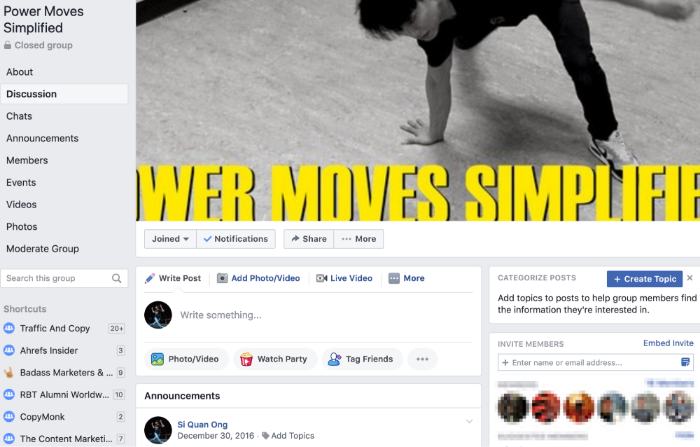
Then we filmed each lesson by using Facebook’s Live feature.
Besides some technical issues (like audio), we received rave reviews for our course.
Takeaway:
Don’t let perfectionism stop you from launching. People buy courses for the information, not the software you use or how perfect it looks.
What I Would Do Differently Today
I wouldn’t change a thing.
Online courses worked for me then, and it’s the monetization strategy I would use today.
That said…
Your results may vary.
It’s a good idea to play around with different monetization methods to see what works best for you. Even if you find a cash cow, always be looking at different ways you can diversify your income stream.
Otherwise, you’re asking for trouble.
Nomadic Matt has a blog that receives 1 million visitors each month, but as shared in his interview on Noah Kagan Presents, if he had continued with the same business model he had when he started (i.e. selling links), his business would have been dead in the water by now.
Key Takeaways
- Test different monetization strategies and see which one works out best for you.
- Patreon, online coaching, and online courses are all viable methods to generate revenue.
- You can also consider other methods like affiliate or niche marketing, selling eBooks, and so on.
Further Reading
- How to Make Money Blogging (Free Guide for 2024) by Jon Morrow
- Affiliate Marketing for Beginners: Go from 0 to $1,000 In Passive Income by Leanne Regalla
- How to Make Money Writing: 5 Ways to Get Paid to Write in 2024 by Glen Long
Are You Ready to Create a Profitable Niche Website?
This wasn’t a case study about how successful I am or how many Lamborghinis I now own.
It’s the opposite.
My site wasn’t successful by any means.
Instead of sipping mojitos at the beach, I’m still working out of an office.
But that’s because I didn’t know then what I know now.
Now I know better. Now I know what to do. And now so do you.
It is possible to build a successful niche website and monetize it
So what are you waiting for?
Paradise is waiting.

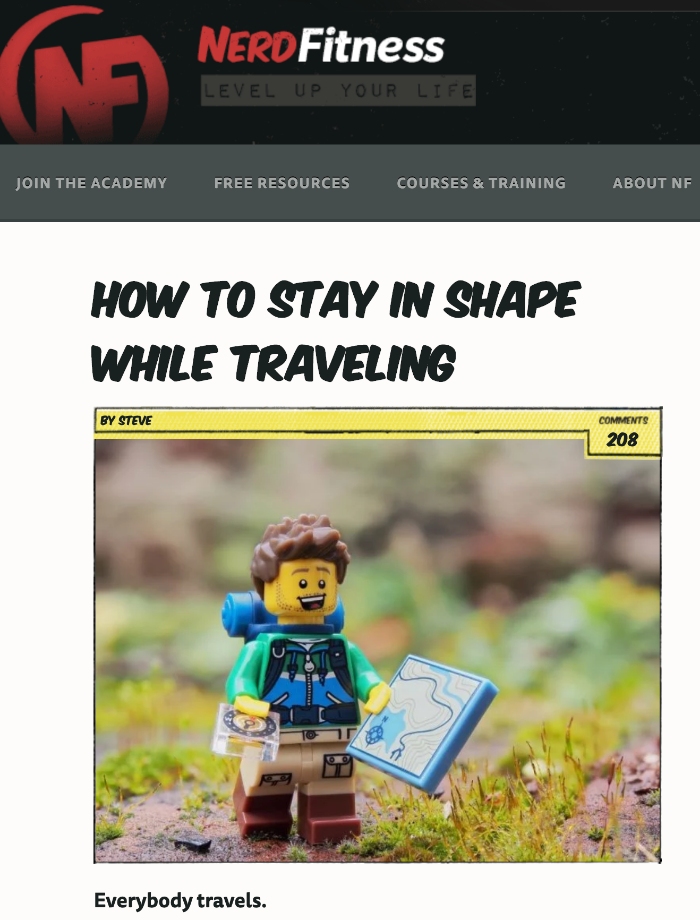

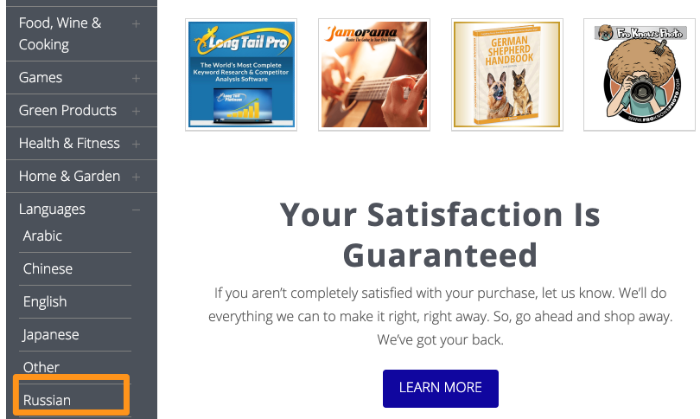
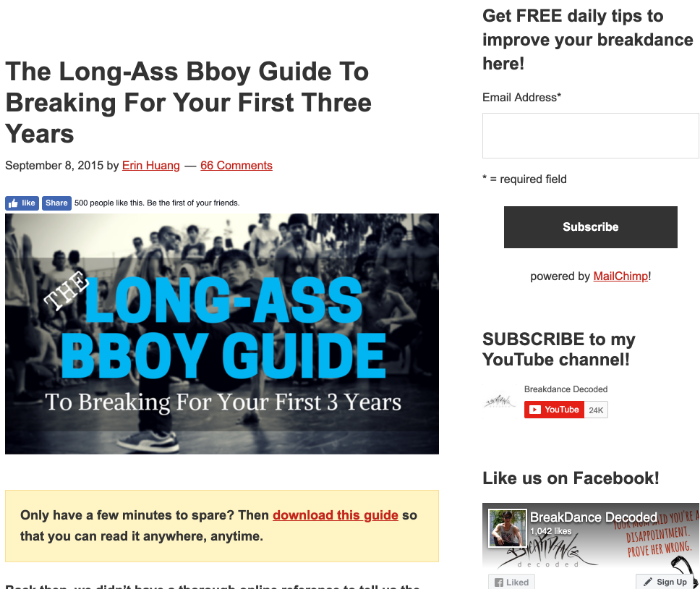
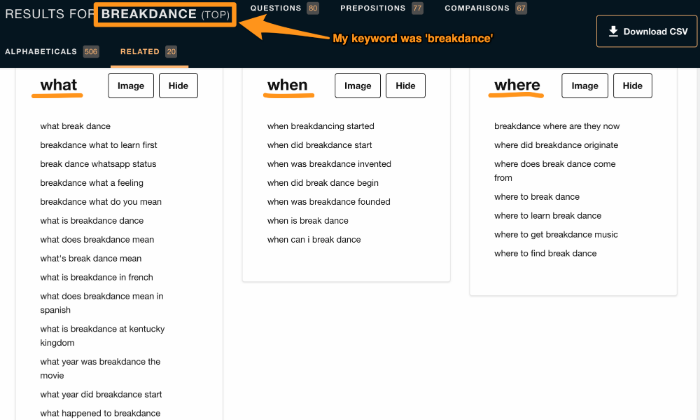
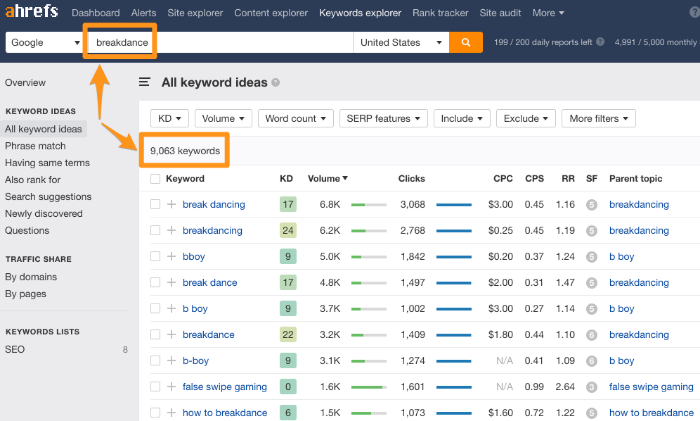

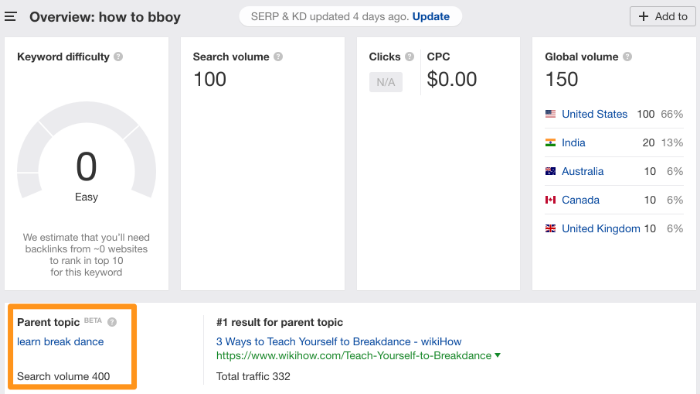
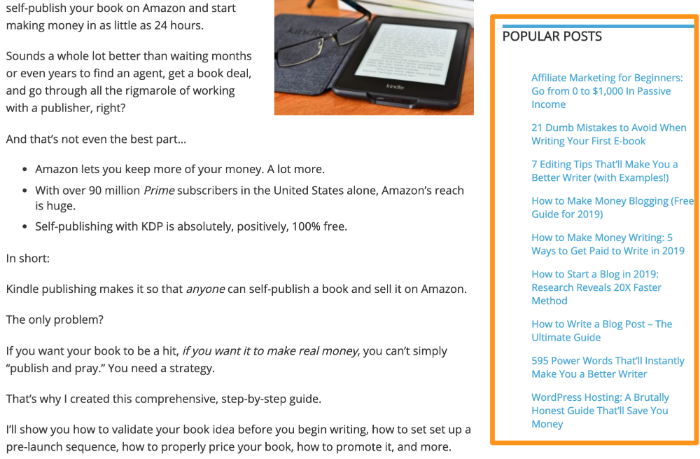
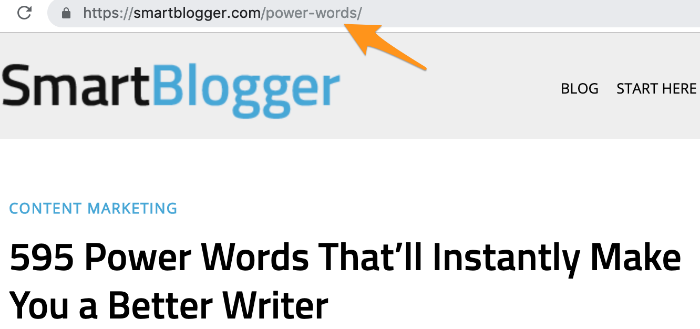
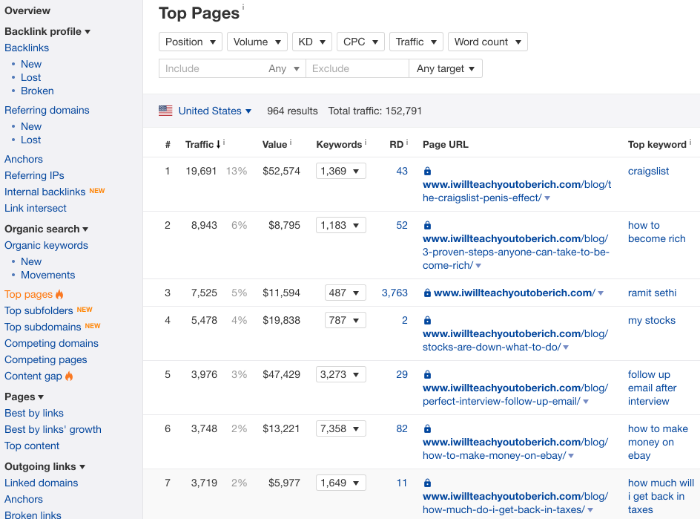
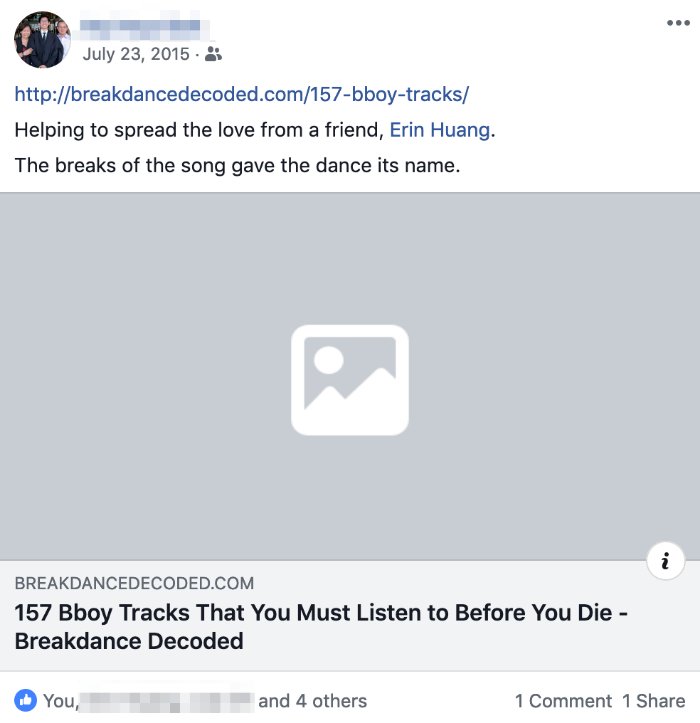
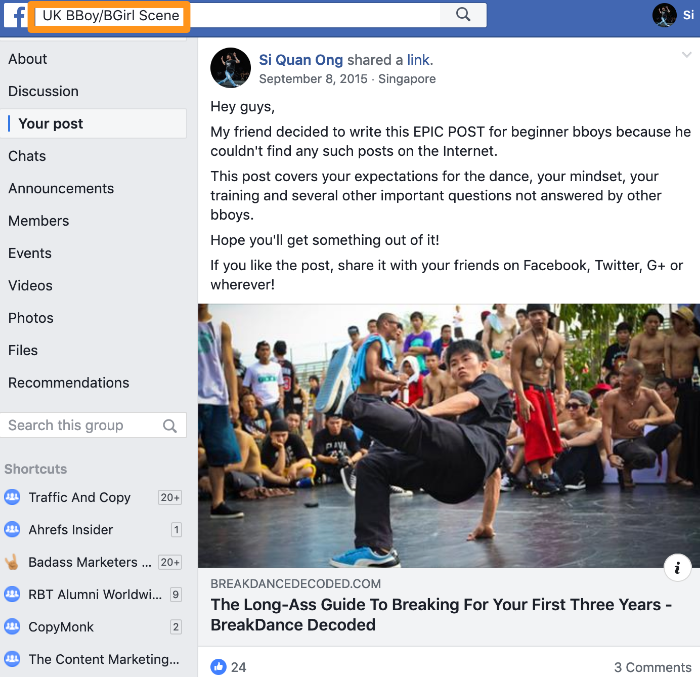
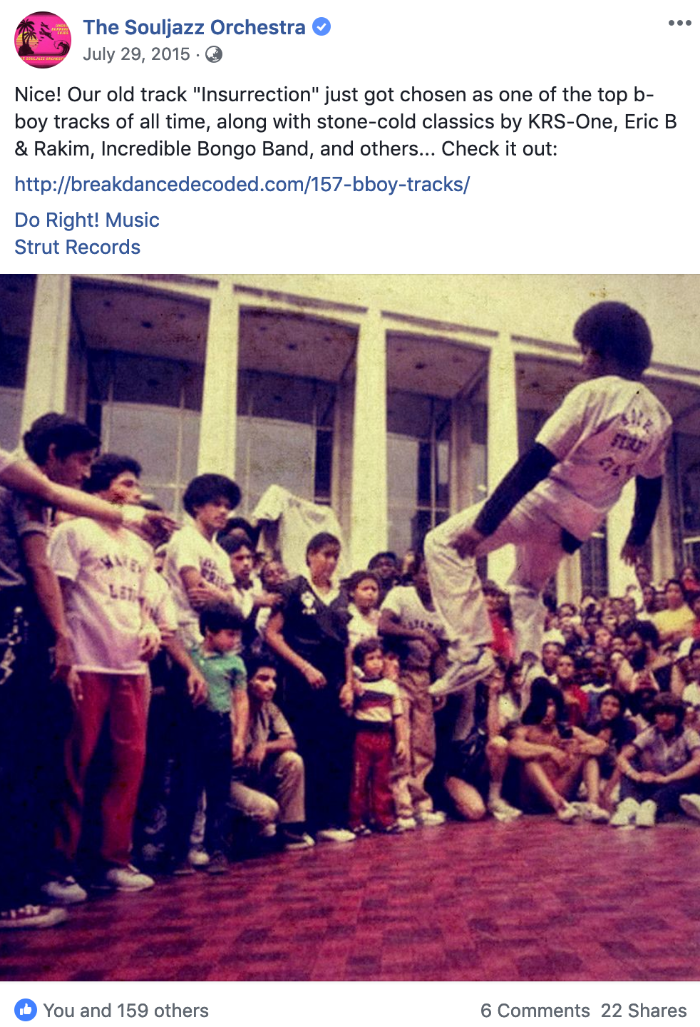
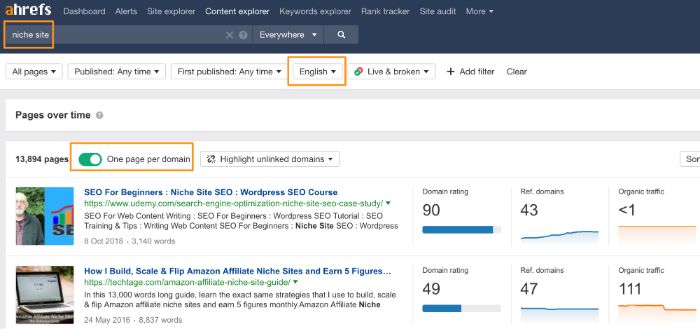
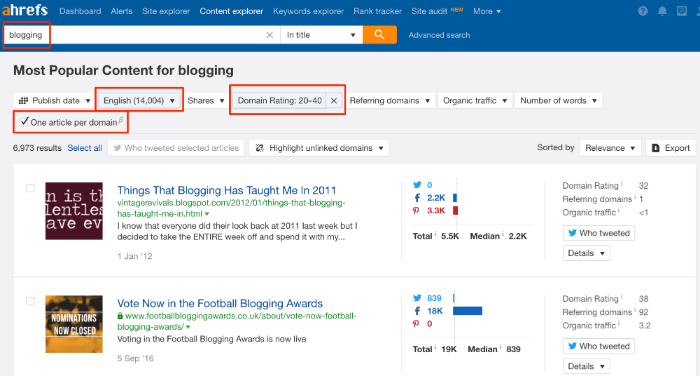
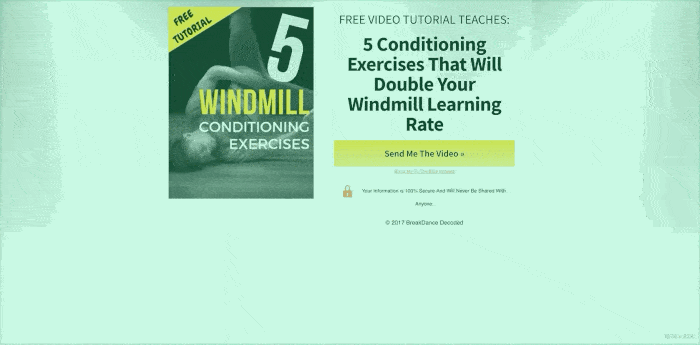
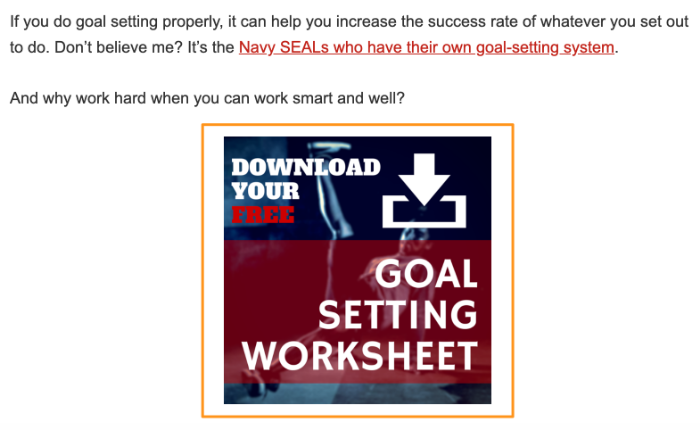
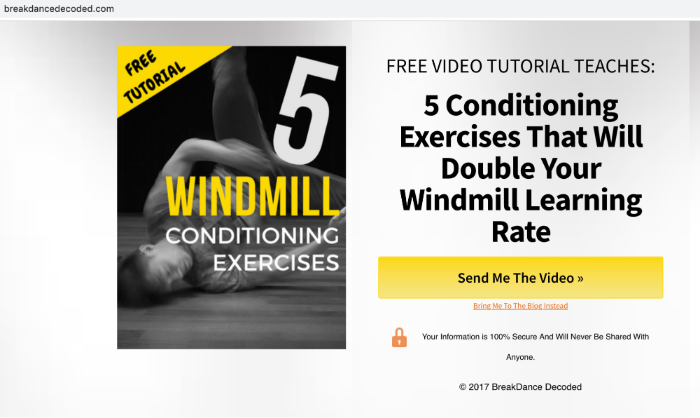
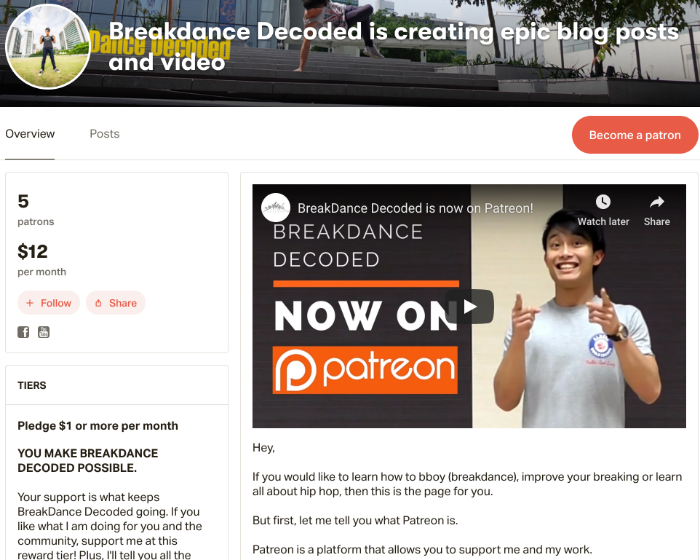
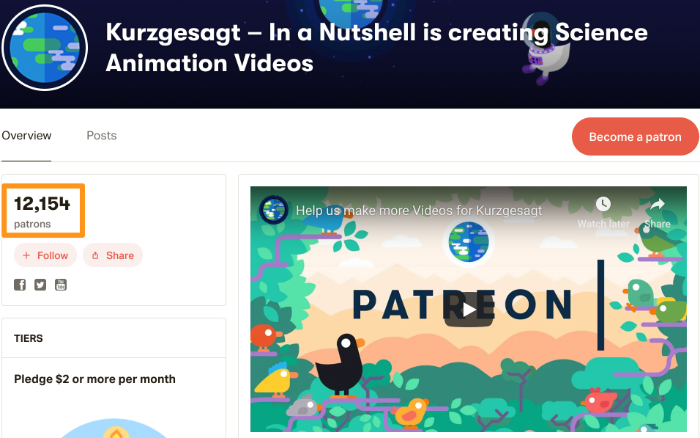

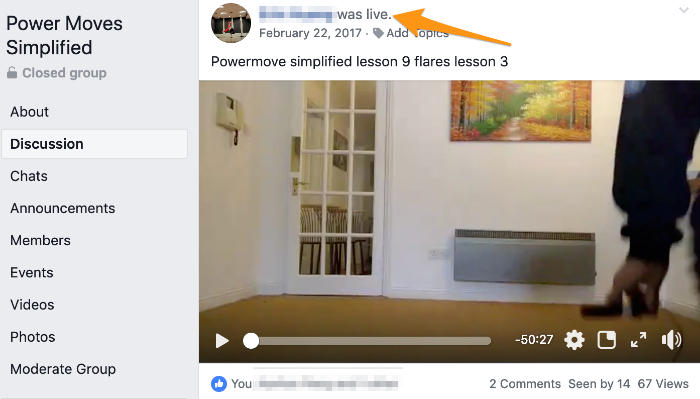




This is mind blowing… Personally, if I would go back three years ago, the first thing I would do differently is learn how to write better web content.
Thanks Mysson! Appreciate you reading.
And 100% – great content is the key to ranking, increasing your authority and building an audience.
This is great info. I had a micro niche site several years ago about excessive body hair in women. Yeah, it’s an actual thing. Didn’t make much money from it but it was featured in super popular online websites including Women’s Health magazine website, New York Magazine website, Yahoo, and other places. It was definitely a lesson learned journey, teaching what to do/not do to grow a niche site (or any website) successfully.
That’s so awesome to hear! Success or not, you’ve definitely learnt enough to build any niche site well now 🙂
Very informative and explained in detailed with examples of tools that can be used. Awesome work
@Adam Thanks for the kind words! Appreciate you reading 🙂
Great article! Thank you for sharing your experience ❤️
You’re welcome! Thank you for reading 🙂
Hey,
Thanks for sharing this helpful & wonderful post. i really appreciate your hard work. this is very useful & informative for me.
thanks for sharing with us. thanks a lot.
Regards
FutureTricks
You’re welcome! 🙂
I absolutely agree every comment so far: exceptionally clear, exceptionally well-written, and exceptionally practical.
Too many of these sorts of articles, even good ones, simply overwhelm with too much data, even if the data is good. So that one is ultimately stultified into a sort of senselessness and inaction.
I too have had a couple of different niche websites over the past few years, one of which made some money — nothing spectacular, but enough to show me that it’s not only possible, but also realistic. Your clear and concise codification here creates the opposite of overwhelm:
It inspires one to start the work now — today, motherf*cker! — because while there is real work involved, you present it in such a way that discloses how do-able it actually is — without clicking through to a thousand other links, I mean, and reading through a thousand other articles, all of which invariably leaves a person feeling as if she’s gotten nowhere except right back to the beginning.
Ray, those are some very kind words 🙂 I’m glad that the article is inspiring you to do the work and start building the site!
Of course, since you’ve had a few sites over the years, you know perfectly well how do-able it is 🙂
Very nice detailed guide! Incredible how close our paths are; I started in 2014 and my first niche website was about Tattoos, so quite close to Break Dance 🙂 Completely agree about your conclusions, especially quality > quantity. Quick question – are you using any tools/widgets/plugins to improve engagement metrics of your posts like calculators, quizzes or something else? I started using quizzes from quizterra.com and see that it affects the session time and revenue per post. What do you think of that?
This is the best detailed guide so far about creating a niche blog from scratch. Loved it.
Just ask yourself, do people spend money on this topic? If the answer is YES then your niche can be profitable.
For starters, always pick a less competitive niche. However a more competitive niche is grounds for more exposure.